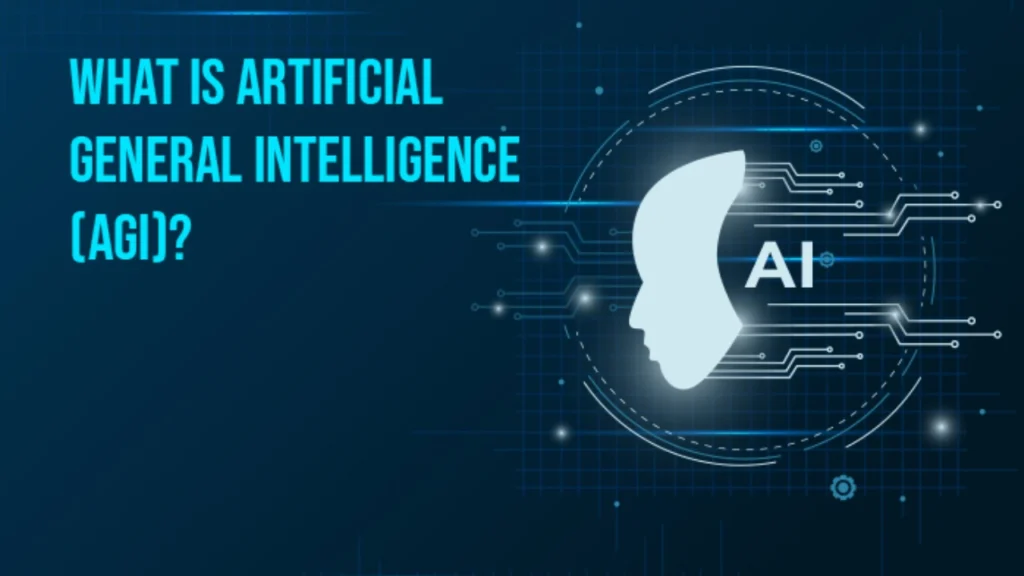Discover what Artificial General Intelligence (AGI) means in AI, how it differs from narrow AI, real-world examples, and the current progress toward human-level intelligence in machines.

What is AGI in Artificial Intelligence?
AGI (Artificial General Intelligence) refers to an advanced form of AI that can perform any intellectual task a human being can do. While current AI systems (like Siri, Alexa, and ChatGPT) excel at specific tasks—called Narrow AI—AGI aims to replicate human-level understanding, learning, and adaptability across diverse situations.
In simple terms, if today’s AI is like a calculator, AGI would be like a fully functioning human brain.
This leads us to a popular question: what is AGI artificial intelligence and how is it different from traditional AI? The answer lies in its ability to generalize learning and apply it across multiple domains, which is what makes it so revolutionary.
AGI vs AI: Key Differences
| Feature | Narrow AI (ANI) | Artificial General Intelligence (AGI) |
|---|---|---|
| Task Scope | Single/specific tasks | All human-like tasks |
| Flexibility | Low (task-specific) | High (domain-independent) |
| Learning Ability | Pre-programmed | Self-learning and adapting |
| Consciousness | None | Potential for self-awareness |
| Examples | Google Translate, ChatGPT | Not fully developed yet |
Narrow AI vs General AI
Narrow AI is trained for one task—like playing chess, recognizing faces, or translating languages. It cannot apply its learning to unrelated tasks.
General AI (AGI) can generalize knowledge from one domain and apply it to others, much like how humans learn to solve new problems based on prior experience.
Example:
- Narrow AI: A self-driving car that only navigates city streets.
- AGI: A machine that drives, cooks, learns new languages, plays games, and adapts to new jobs.
The difference between narrow AI and general is one of depth, flexibility, and cognitive range. Narrow AI lacks true reasoning—while artificial general intelligence aims to match human intellect.
AGI Definition & Meaning
- AGI stands for: Artificial General Intelligence
- Definition: AGI is a theoretical AI system capable of understanding, learning, and applying knowledge at a level equal to or beyond human intelligence.
- AGI Meaning in Artificial Intelligence: It’s the ultimate goal in AI development—a machine with true cognition, creativity, and reasoning like a human.
When people search for agi stands for artificial intelligence or agi definition artificial intelligence, they’re referring to this vision of a machine that can think, plan, and solve complex problems like a person.
Examples of Artificial General Intelligence
While true AGI doesn’t yet exist, researchers and fiction writers have envisioned many examples:
Fictional Examples:
- Jarvis from Iron Man
- HAL 9000 from 2001: A Space Odyssey
- Data from Star Trek
Research Projects Moving Toward AGI:
- DeepMind’s Gato: A multi-modal model that performs 600+ tasks
- OpenAI’s research: Advancing toward generalizable agents
- Numenta’s brain-inspired computing
These represent early steps toward an artificial general intelligence AGI example, even if we’re not quite there yet.
Is AGI Achievable? The Current Progress
AGI is not yet reality, but leading research labs are making progress:
- OpenAI, DeepMind, and Anthropic are investing in scalable models
- Neuroscience-inspired approaches are improving machine cognition
- Ethical debates and regulatory frameworks are in development
Challenges include:
- True understanding of consciousness
- Ethical control over AGI behavior
- Avoiding misuse or existential risks
As we continue developing smarter algorithms, more people are asking: what is the difference between AI and AGI? Understanding this helps society prepare for a transformative shift in how machines will think and act.
Conclusion
Artificial General Intelligence (AGI) is the next frontier of artificial intelligence. While AI is already transforming industries, AGI promises a world where machines can reason, learn, and act like humans—across any field or challenge.
Whether it becomes a boon or a threat depends on how we build, regulate, and ethically guide its development.







